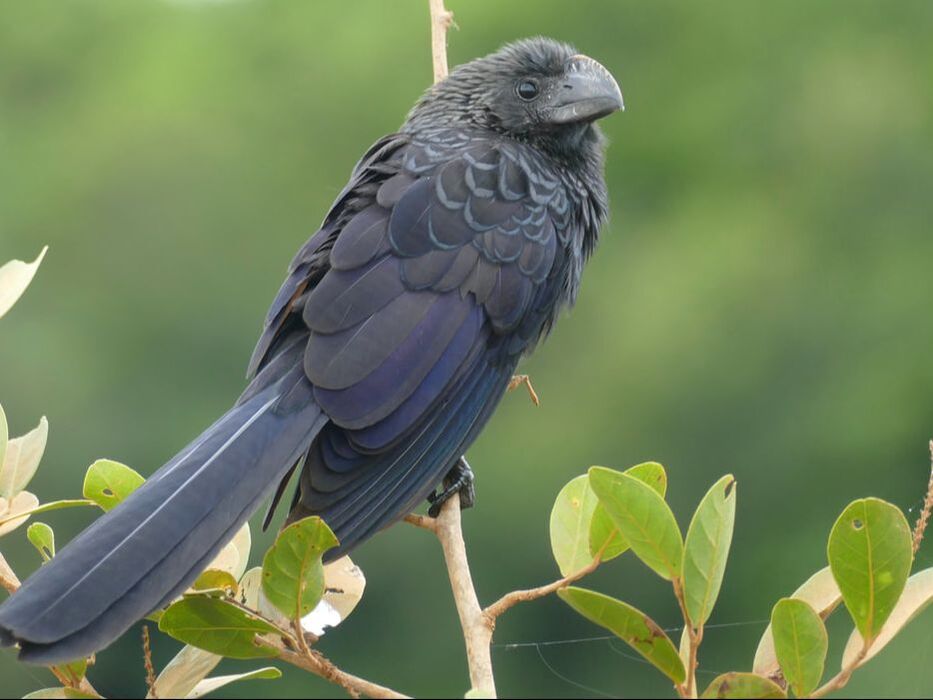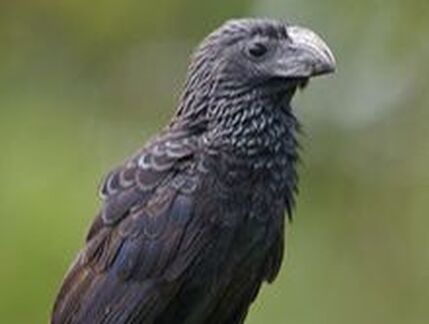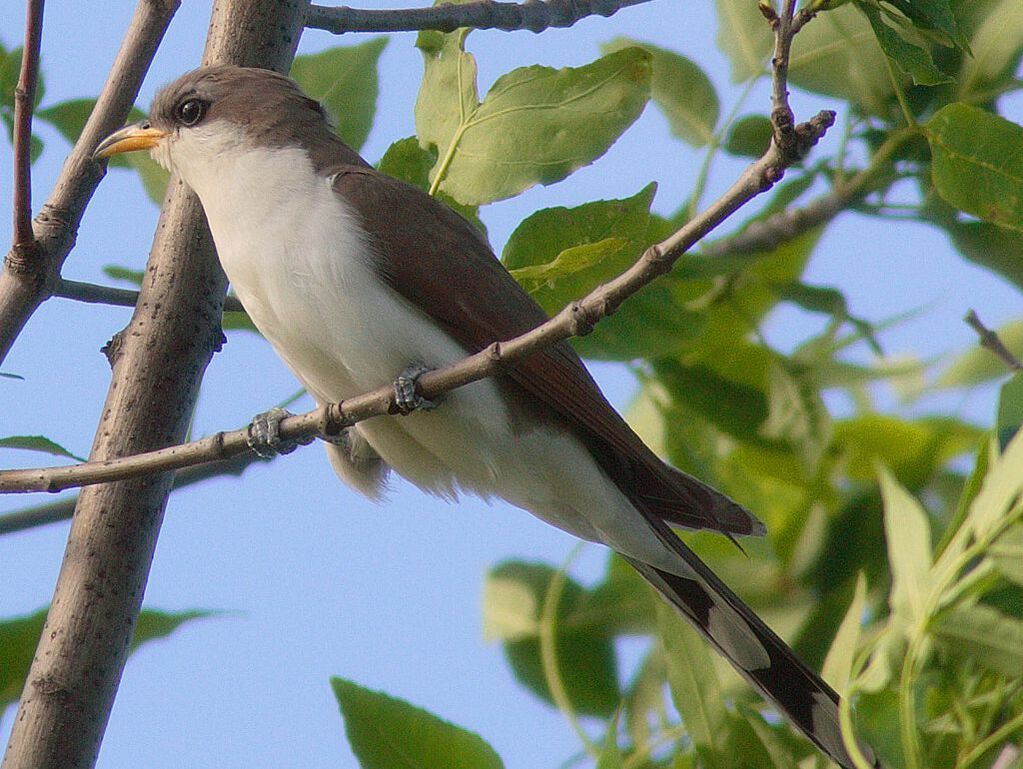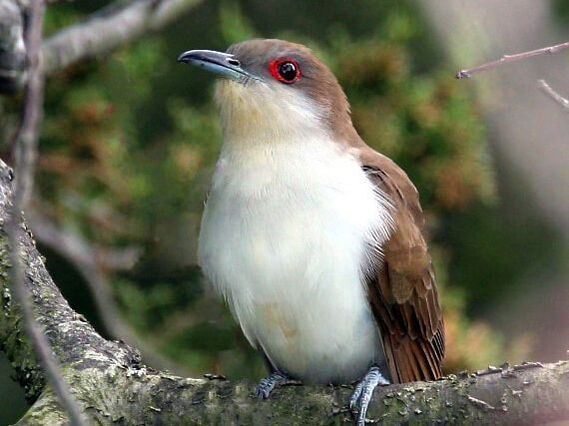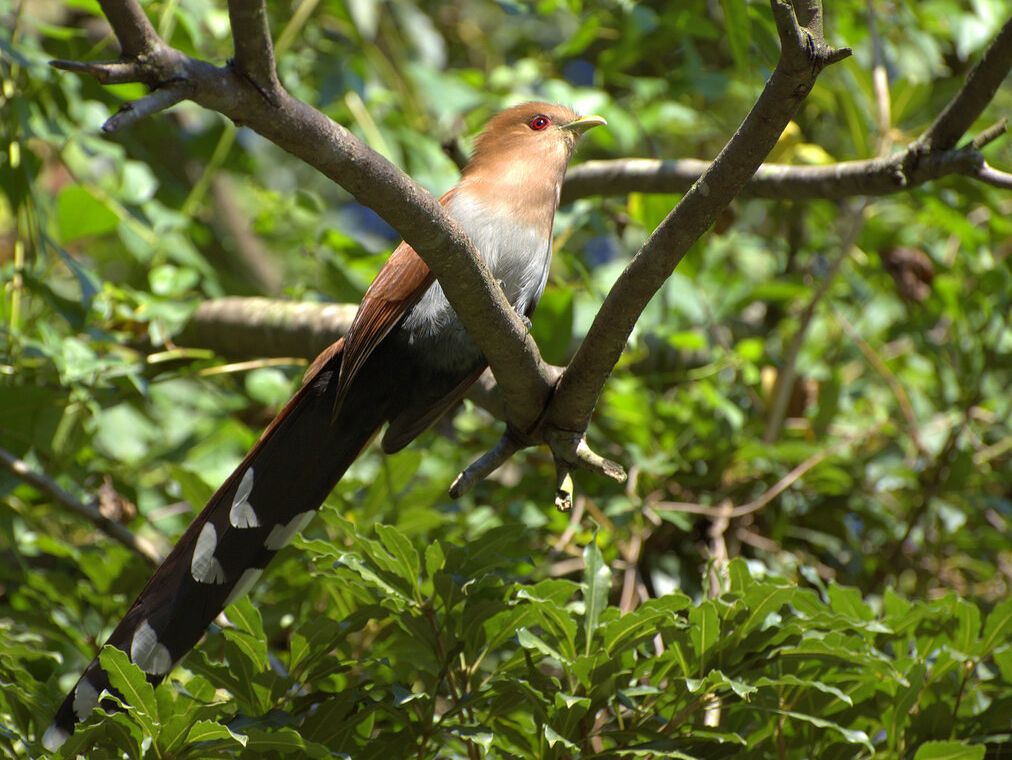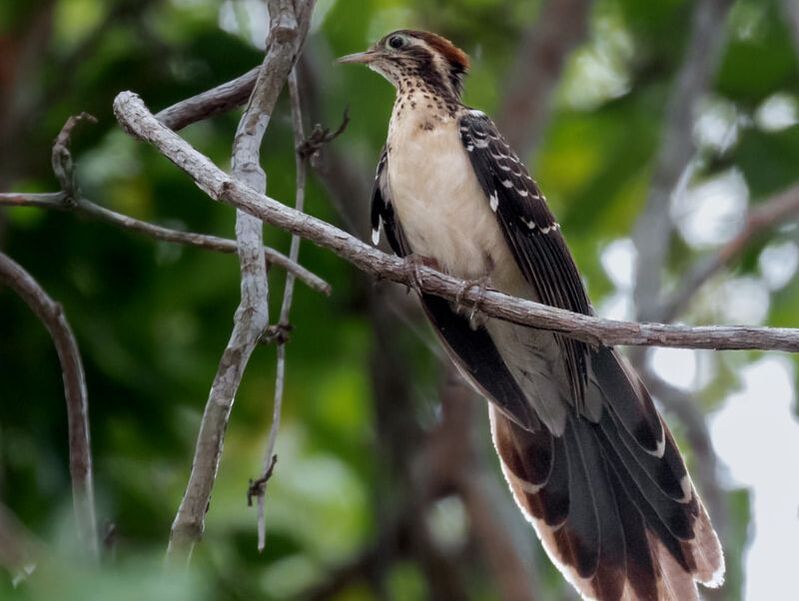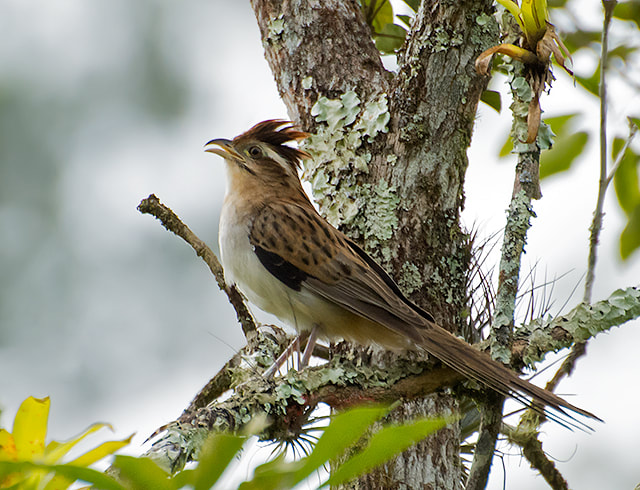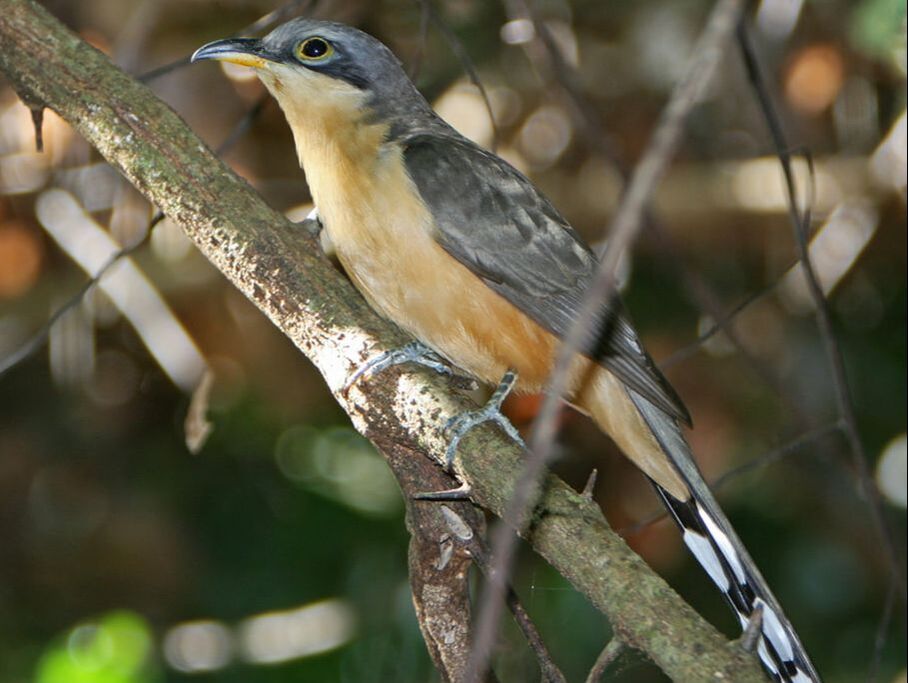Ani & Cuckoos - in Belize
Smooth-Billed Ani
Smooth Billed Ani - Anis are bizarre, coal-black cuckoos with long floppy tails and unique, very deep and broad-sided bills. They occur in tropical lowlands and foothills, in a variety of open and semiopen habitats. Smooth-billed is very similar to Groove-billed Ani, but the two species only overlap on a few Caribbean islands, southern Central America, and northern South America. Smooth-billed is slightly larger, with overall smooth sides to the bill. The typical calls of the two species are different; Smooth-billed has a hawklike, whistled scream.
BELIZE HABITAT - Ground and lower strata along edge of second growth scrub, fallow fields, littoral forest edge. Where can you find this bird in Belize? Occasional winter visitor to north cayes where it may occasionally remain to breed, at least on Ambergris Caye. Not recorded from mainland. Interesting Facts
|
Groved-Billed Ani
Groved Billed Ani - Entirely black bird with long tail that seems loosely attached. Named for its thick, grooved bill with a curved top, but grooves often difficult to see. Widespread through Central and South America, north to southern Texas. Most similar to Smooth-billed Ani, which lacks the grooved bill. Most often found in small flocks. Prefers open shrubby habitats such as weedy lots or woodland edge.
BELIZE HABITAT - Ground and lower strata within second growth scrub, fallow fields, forest edge. Where can you find this bird in Belize? Common resident on mainland away from extensive forest and on Ambergris Caye; regular winter visitor to Caye Caulker and occasional transient on other cayes. Interesting Facts
|
Cuckoos - in Belize
Yellow-Billed Cuckoo
Yellow Billed Cuckoo - Brown above and white below with yellow bill. Long tail with black-and-white spots on underside. Wings flash rufous in flight. Stealthy and shy as it moves through dense forests and riparian areas. Favors tent caterpillars. Winters in South America.
BELIZE HABITAT - Mid-levels to sub-canopy in most forest habitats, including mangroves, forest edge, and second growth scrub. Where can you find this bird in Belize? Uncommon (mainland) to common (cayes) spring and autumn transient, mid-April to early June and late August to early November. Interesting Facts
|
Black-Billed Cuckoo
Black Billed Cuckoo - Slender, long-tailed bird more often heard than seen. White below and brown above, with black bill. Separated from Yellow-billed Cuckoo by bill color, uniformly brown outer wings (not rufous) and smaller white spots on underside of tail. Feeds mainly on caterpillars and other insects. Found mostly in deciduous woodlands, especially areas with thick secondary growth. Often sits motionless for long periods of time and is difficult to spot. Listen for its song, a repeated series of soft "cu-cu-cu" notes.
BELIZE HABITAT - Mid-levels to sub-canopy within broadleaf forest. Where can you find this bird in Belize? Occasional spring and autumn migrant, mid-April to mid-May and late September to mid-November. Interesting Facts
|
Squirrel Cuckoo
Squirrel Cuckoo - Very striking and long-tailed bright rusty cuckoo, widespread in tropical lowlands and locally up into foothills. No similar species in Mexico and Central America. Occurs in a wide range of wooded and forest edge habitats. Mostly forages stealthily at mid-upper levels in trees, where can be surprisingly difficult to see. Often seen swooping across roads and eliciting a ‘wow’ reaction. Underside of white-tipped tail feathers is rusty overall in West Mexico, blackish overall in other areas.
BELIZE HABITAT - Most broadleaf forest and forest edge; less common in pine forest. Where can you find this bird in Belize? Fairly common resident on mainland and Ambergris Caye. |
Pheasant Cuckoo
Pheasant Cuckoo - Very retiring and elusive cuckoo of tropical forest, heard far more often than seen. Sings mainly in spring and summer, and at other times appears absent from areas where it may actually be fairly common. Feeds mostly on the ground, walking stealthily, but usually sings from mid-upper levels in trees, when it is most likely to be seen. Oddly shaped, with small head (rusty crest often raised and lowered) and very long, fan-shaped, (‘pheasant-like’) tail.
BELIZE HABITAT - Ground to sub-canopy within primary and secondary broadleaf forest; dense second growth. Where can you find this bird in Belize? Regular and local resident, with records from widely scattered localities in interior from near sea level to 3,000 feet elevation. Poorly known in Belize. |
Stripped Cuckoo
Stripped Cuckoo - Long-tailed, fairly small cuckoo of tropical lowlands, rarely seen unless singing its loud and far-carrying song, usually from a fence or other low perch. Most of the time it is furtive, feeding on or near the ground in dense growth. Found in scrubby woodland and edge, overgrown weedy fields, and thickets, often with dense grasses. Note the striped upperparts and plain buffy underparts. While singing it often raises and lowers its dark crest.
BELIZE HABITAT - Lower strata within open second growth scrub and fallow fields. Sings from exposed perch. Where can you find this bird in Belize? Locally fairly common resident in lowlands on mainland nearly throughout except for west Orange Walk. More often heard than seen. |
Mangrove Cuckoo
Mangrove Cuckoo - Slender, long-tailed bird found in shrubby woodland (especially mangroves). Brown above and buffy below with gray cap, black mask, and bold black-and-white pattern on underside of tail. Bill is black on top, yellow below. Similar to Yellow-billed Cuckoo, but note buffy belly, black mask, and no rufous in the wings. Shy; tends to sit still for long periods of time, can be difficult to spot. Song is a series of low croaking notes, gradually becoming longer and lower-pitched. Feeds primarily on insects and small reptiles.
BELIZE HABITAT - Littoral forest, mangroves, riverine forest, forest edge, and scrub. Where can you find this bird in Belize? Status poorly known; at best, very uncommon and local resident along coast and lowland waterways west to New River in north Belize. Formerly bred on a few north cayes and still occurs as occasional migrant, but now apparently extirpated as breeding species on cayes. Nesting habitat has been steadily covered for residential and commercial development. A specimen from San Ignacio Cayo take on April 8, 1926 is the only record away from coastal plain. Interesting Facts
|

